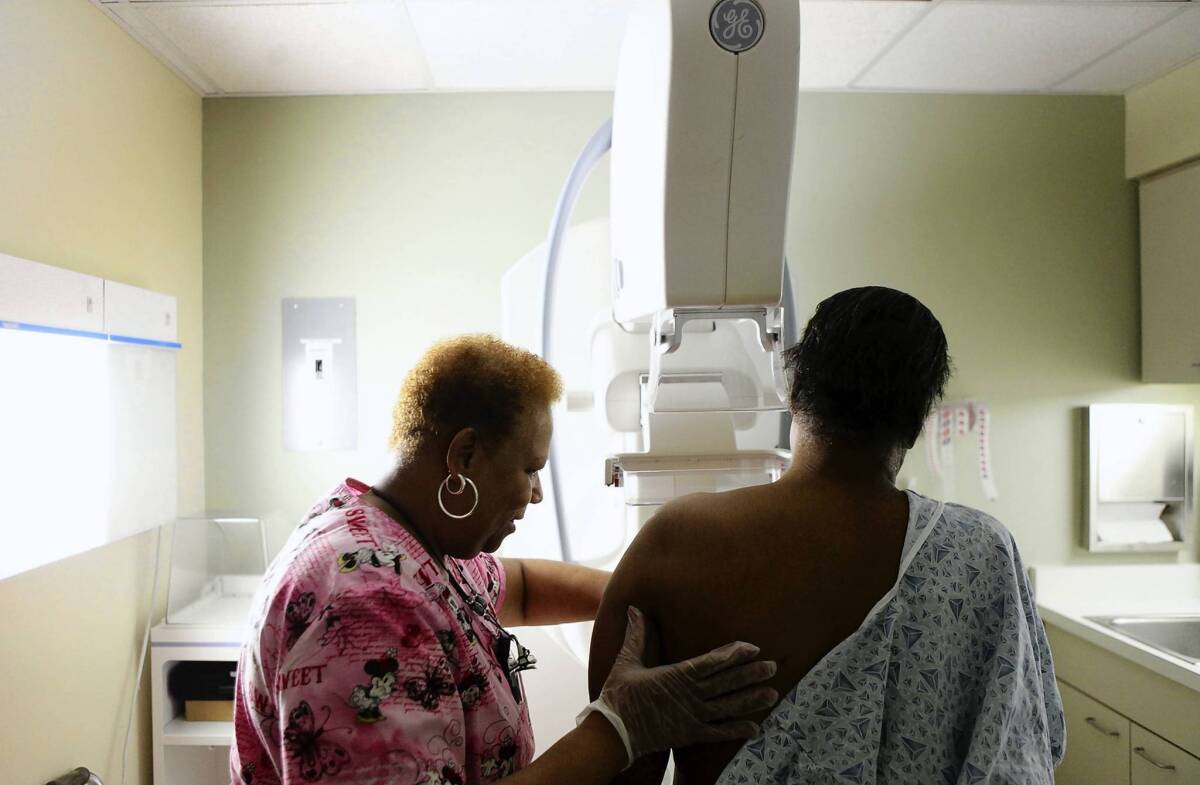False-positive mammograms take mental toll, study finds

Long after learning that a troubling reading on a screening mammogram was just a false alarm, women continued suffering negative psychological effects, researchers in Denmark have reported.
Six months after hearing they did not have breast cancer, women with these false positives experienced changes in “existential values” and “inner calmness” as great as for women who had cancer. They reported having more anxiety, feeling more pessimistic and having more problems with their sleep and sex lives — as well as other negative outcomes — than women who had normal mammograms.
The effects moderated over time but were still apparent three years after the initial screening.
The findings suggest that healthcare providers need to pay closer attention to the harmful effects of screening programs, said University of Copenhagen physician-researcher Dr. John Brodersen, lead author of a study detailing the work published Monday in the journal Annals of Family Medicine.
“When I became a doctor and I took the Hippocratic Oath, I said, ‘Do no harm,’” he said. “But this is harm.”
In the U.S., healthcare policymakers for years have debated the best way to screen asymptomatic women for breast cancer. The hope is that regular mammograms will detect small, early-stage cancers that can be easier to treat.
In 2009, citing concerns about false positives, the U.S. Preventive Services Task Force urged women 50 and older to get mammograms once every two years. Younger women should decide for themselves whether to begin screening after weighing the pros and cons with their doctors, the task force said.
But many medical practices — not to mention groups like the American Cancer Society — still recommend that women get screenings every year, starting at the age of 40.
Early detection is the best way to prevent cancer deaths, screening proponents argue.
“Saving lives is our goal. We’re here to minimize the negative effects of treatment and save lives,” said Dr. Sally Shaw, who leads the breast cancer screening program at City of Hope Cancer Center in Duarte. “It is known that mammography can find early cancers. It isn’t perfect, but it’s the best tool we have.”
But Brodersen, who works as a general practitioner in Denmark, said that watching women cope with worrying test results during his medical training got him thinking about the negative consequences of frequent mammograms.
“If women had cancer, they cried,” he said. “If it was not cancer, they cried too.”
Hoping to learn why such reactions were so common, Brodersen started what became a 13-year project. He developed a new survey to gauge the negative psychological effects of false positive test results and compared the reactions of 454 Danish women who had abnormal mammograms with those of 908 controls who had normal results.
Dr. H. Gilbert Welch, a professor at the Dartmouth Institute in Lebanon, N.H., and a well-known critic of over-screening, said the new research was one of the first to track the effects of false positive results on women’s psyches over time.
“This isn’t a short-term anxiety hit,” he said. “Their state of mind is somewhere in between a patient with breast cancer and a normal one.”
Rates of false positives — mammograms that turn up abnormalities that are ultimately found not to be cancer — vary from country to country.
In Scandinavia, where women between the ages of 50 and 69 are screened every other year, about 20% to 25% who complete 10 mammograms will have at least one false positive, Brodersen said. In the U.S, more than half of women who get 10 mammograms will have at least one false positive.
Welch said that it was up to women to decide what importance they wanted to place on the psychosocial effects of a false positive reading.
“Some will say, ‘I accept it,’” he said, but some people “feel like their breasts are a ticking time bomb. That’s a side effect we should tell women about.”
City of Hope’s Shaw agreed that women needed to better understand the potential downside of screenings. But she said she still favored starting the tests earlier and continuing them more often.
At her institution, which recommends yearly screening starting at age 40, 3,000 to 4,000 women come in for routine screening annually. Typically, she said, the program ferrets out between 4 and 10 cancers per 1,000 mammograms.
“We all have things in life that set us back and cause us emotional turmoil. The key to a successful life is, how do we deal with those things?” she said. “I think we should be aware of the effects and help women through them.”
Screening less frequently could be one way to reduce the numbers of women who have to cope with false positives without greatly increasing their risk of developing advanced breast cancer, a separate team of researchers reported Monday in JAMA Internal Medicine. That team found that women ages 50 to 74 who got screened every other year had essentially the same risk of serious illness and a substantially lower risk of false positives than women who were screened every year.







